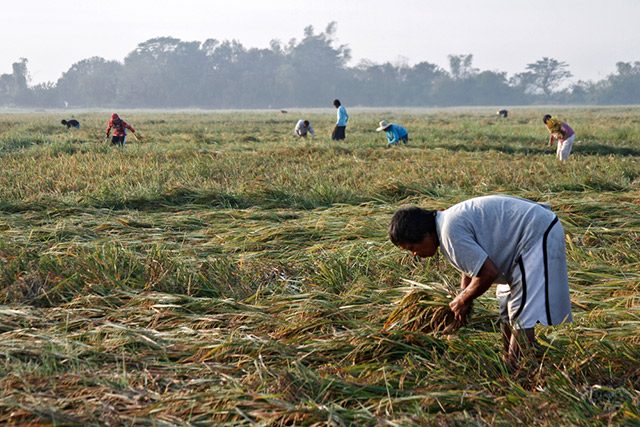SUMMARY
This is AI generated summarization, which may have errors. For context, always refer to the full article.

MANILA, Philippines – Seven years after the Climate Change Act of 2009 was passed, only 1 in 10 local government units (LGUs) in disaster-prone Philippines has complied with the law’s requirement of drafting local climate change action plans (LCCAP).
Republic Act Number 9729 assigns LGUs to be on the frontline of formulating and implementating plans that will increase the capacities of communities to mitigate the effects of climate change.
As of July 2016, however, only 160 LGUs – or less than 10% of the total 1,700 LGUs – have LCCAPs in place.
Responding to this low turnout, Climate Change Commission (CCC) Secretary Emmanuel de Guzman urged local officials to create their own action plan by the end of 2017.
“Based on our timeline, we should have 500 plans by the end of the year, and all LGUs – municipalities, cities and provinces – should have their own LCCAP by the end of next year,” De Guzman said.
Vulnerable nation
An archipelago located in the Pacific, the Philippines is considered one of the world’s most vulnerable countries to climate disasters.
Several studies also suggest that the country’s vulnerability to the impact of climate change is made worse by poverty and the lack of knowledge and means to protect communities. (READ: 6 ways climate change will affect PH cities)
De Guzman said that, more than being a requirement of the law, creating an action plan should be a moral responsibility: “Non-action on climate and disaster risks is a social sin and a form of injustice to the poor and the most vulnerable.”
For the Philippines, climate change means drastic changes in warming and rainfall levels. Extreme weather conditions, such as droughts and heavy rainfall, are expected to be more intense and frequent.
De Guzman said that sectors mired in poverty – such as farmers, fisherfolk, and informal settler families living in danger areas – have a higher chance of experiencing the ill effects of climate change. They often live, farm, or hold assets in areas more exposed to droughts and floods, putting their homes, crops, livestock, and even their own lives at greater risk.
In 2013, for example, the country experienced the brunt of the world’s strongest storm to ever make landfall when Super Typhoon Yolanda barreled through a large portion of the country. The super typhoon displaced thousands of Filipinos in Western and Eastern Visayas, home to thousands of households who consider themselves living below the poverty line.
As early as then, Vice President Jejomar Binay urged LGUs to implement climate change plans, to avoid a repeat of the devastation caused by a typhoon as powerful as Yolanda.
Earlier in 2016, farmers in Kidapawan also lost their crop and source of livelihood by the near record El Niño, which has hit the country.
What the plan is for
According to De Guzman, having an LCCAP would benefit the poorest sectors most vulnerable to climate change.
“An LCCAP could well define the strategies of a community for strengthening local risk governance, enhancing rural livelihood, ensuring ecosystems integrity, and building cultural resilience. Implementing these strategies surely reduces disaster risk and builds the adaptive capacity and resilience of communities to climate change impacts,” De Guzman explained.
With an LCCAP in place, LGUs could have access to the P1-billion People’s Survival Fund (PSF) that will finance local adaptation initiatives, De Guzman said.
The special fund, provided in the National Expenditure Program (NEP) and operational since December 2015, may be used to fund climate change-related projects, such as water resource and land management, risk insurance for markers and other stakeholders, infrastructure development and protection of natural ecosystem, and monitoring of vector-borne diseases triggered by climate change.
The PSF may also be allocated for forecasting and early warning systems; contingency planning for droughts and floods in areas prone to extreme climate events; strengthening and establishing information networks to support adaptation, initiatives, and projects; and other community support programs by organizations accredited by the CCC.
As of June 2016, however, LGUs have yet to take advantage of this special fund that could help them prepare for natural disasters caused by climate change.
In order to empower LGUs against climate change, the CCC plans to roll out a network of learning centers, envisioned to offer standardized training modules on adaptation and mitigation measures.
“This is part of our national program for convergence where we are promoting and facilitating the convergence of the efforts of national andlocal government agencies to address climate change especially also to improve the capacity of local governments to comply with the many laws related to climate change,” De Guzman said. – Rappler.com
Add a comment
How does this make you feel?
There are no comments yet. Add your comment to start the conversation.